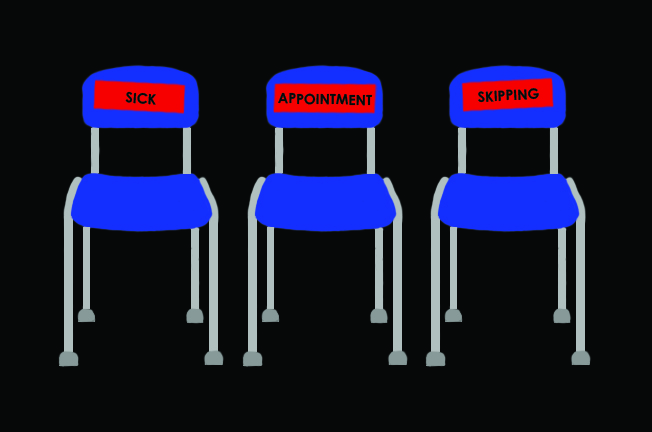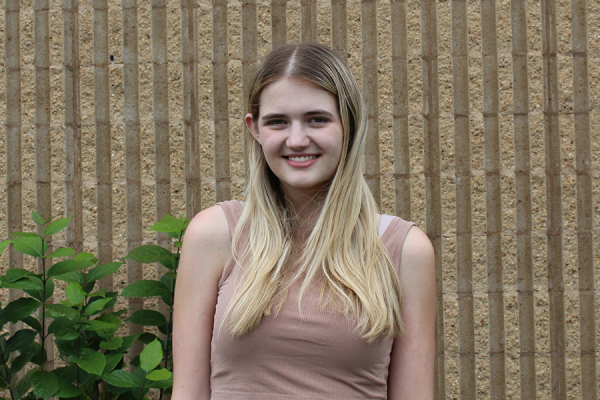My teachers aren’t doing anything in class today. I didn’t get any sleep last night. I’m still fighting off that cold from last week. No one really cares if I’m there or not anyway. It’s just one day; what’s the worst that could happen? To post-pandemic parents and students, these philosophies will feel very familiar. With the growing buzz surrounding attendance problems, the issue has made its way squarely into public consciousness, and many students are asking “what’s the big deal with chronic absenteeism?” Can missing a couple of days of school really impact student learning so drastically? What is the school doing to combat this issue? These are real questions that need real answers, so let’s discuss.
What is chronic absenteeism? According to the Virginia Department of Education, chronic absenteeism describes missing 10% of the school year, or 18 days based on a 180-day schedule. These days can be either excused or unexcused absences. In other words, a student only has to miss two or three days a month to be considered chronically absent. ACPS reports a division-wide chronic absenteeism rate of approximately 15% and a 94.17% division-wide monthly attendance rate. Western reports a slightly higher attendance rate than the county average, at about a 94.94% monthly rate.
The pandemic and two years of virtual or hybrid schooling made the issue of chronic absenteeism significantly more pronounced. Chronic absenteeism rates spiked after the COVID-19 pandemic, with the county reporting a 96% increase in chronically absent students. “When we were in hybrid, the rhythm of ‘get up, go to school, get up, go to school’ was broken,” explained Principal Jennifer Sublette. “I think kids may have gotten used to assuming they can catch up on [an assignment] later.” Sublette explained that for many students, the pandemic proved that learning outside the classroom is possible. After all, if we were all absent-ish (or at least not in the school building) for a full calendar year, what’s the harm in a day or two here and there?
This shift in attitude regarding school attendance may also be impacting the views of parents. Remember, a student can be considered chronically absent even if they are never truant (meaning they never receive unverified absences), suggesting that in some situations parents are enabling student absenteeism. “Sometimes the student might need some support or services,” explained Teresa Tyler, “but sometimes the family might need support or services. And then we need to help with their specific situation.” Parents’ role in student absence can be significant, which is also why the School Board is pushing to communicate attendance goals with parents and communities.
The effects of chronic absenteeism on student success can be very pronounced. According to Albemarle County Public Affairs and Strategic Communications Officer Helen Dunn, significant student absence “can yield significant academic setbacks and adverse outcomes, including heightened risk of failure and dropout, lagging behind in essential literacy and numeracy skills, missed chances for social growth, escalated stress levels, heightened likelihood of substance use, and more.” Essentially, missing too much school can limit a student’s ability to succeed, even outside of the realm of academics.
So what is the school doing right now to address chronic absenteeism? As the current system stands, students who receive above nine absences are required to make up their missed hours by attending before/after school classes or Saturday school. The idea is that students can use this time to make up for the work they missed in a more structured environment, but the actual level of structure is disputed. “You show up. Kids talk. Kids go on their phones. Kids sleep. Some kids do work; I do work, but a lot of people are just hanging around,” described Max Schroeer, a junior who has attended some make-up classes. Schroeer went on to describe how this loose structure of makeup hours felt more like a punishment than a way to learn missed material. “I shouldn’t be punished because I was sick,” said Schroeer, “and it’s making it so that now I come into school even when I am sick.”
This system of make-up hours will not be in place for much longer, though. The school is currently experimenting with a new system of in-person, flexible instructional time with a slightly different structure, which they hope to officially implement next year. Like the old system, students would be required to come into school outside of school hours to make up for absences, but this instructional time would be taught by a licensed teacher who is in contact with teachers whose classes the student missed. “We don’t just pay the teacher for the actual time they’re sitting there, we give them planning time,” explained Tyler, “and that’s where they would reach out to your teacher and say, ‘do you have the work that [the student] missed?’” By leaving the instruction to a trained professional, the school hopes to improve student understanding of the material and encourage students to utilize credit recovery better.
While Western has a very high monthly attendance rate with only about 5% of students being absent at a time, administrators recognize that much work still needs to be completed. “In each individual case, when we’re working with a family or a student who’s struggling with attendance, it’s serious.” Sublette said, “It’s serious on an individual level.”





